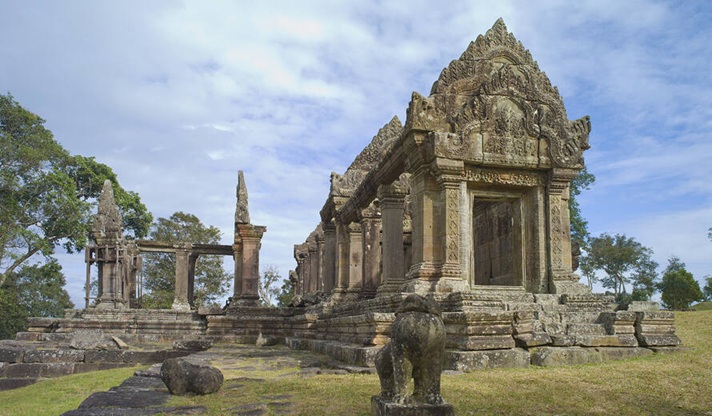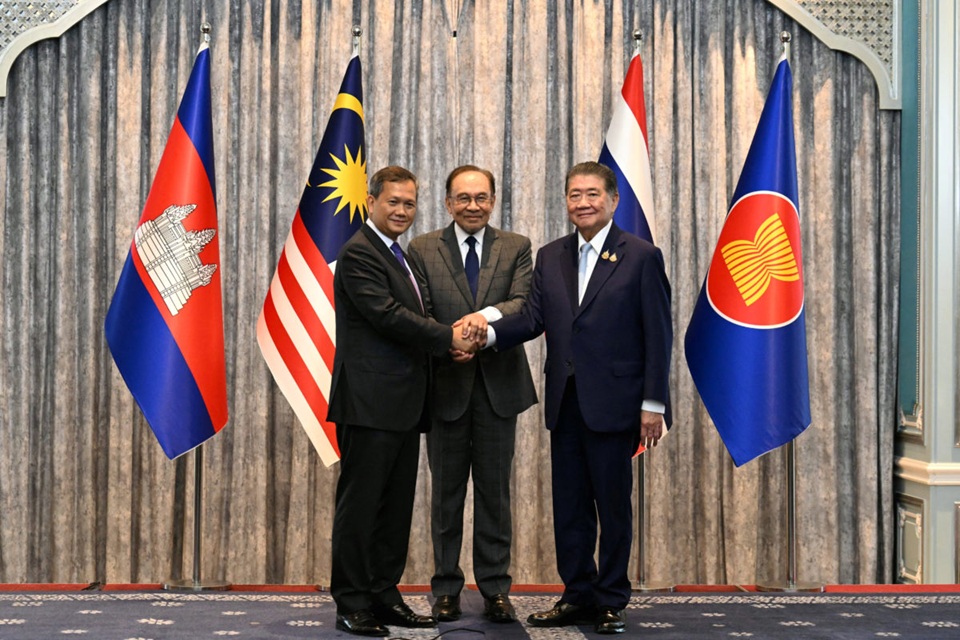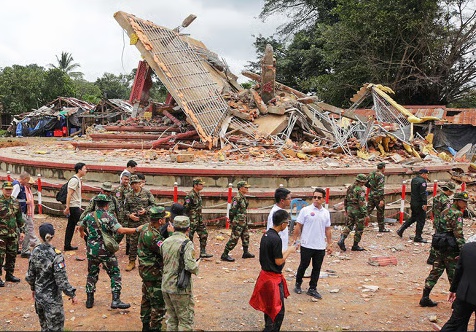On 28 May 2025, a Cambodian soldier was killed in the Emerald Triangle, a shared border region between Cambodia, Laos and Thailand. On 23 July 2025, a Thai soldier lost a leg stepping on a landmine in Nam Yen district, yet another intersection of borders of the aforementioned nations.
Armed conflict began in earnest on 24 July 2025 between Cambodia and Thailand, as both parties blamed the other for instigating the events that led them to this deadly border conflict. Independent analysis estimates at least over 50 military and border police personnel have been killed on Cambodia’s side, with Cambodia reporting 8 civilian deaths, in addition to unconfirmed reports of up to over 700 soldier deaths. Thailand has reported 16 soldiers and 14 civilians killed thus far. Both nations have suffered hundreds of injuries for both personnel and civilians, and hundreds of thousands more people displaced.
Anyone can say that this is some ‘minor’ dispute that did not need this escalation, but the borders between Cambodia and Thailand have long been a sticking point between the nations. This is a dispute that goes back decades, with complicated politics to match.
The Timeline of Dispute
In 1953, Cambodia declared independence from France. Soon after, Thailand and Cambodia would take their border dispute case to the International Court of Justice (ICJ). The ICJ was to deliberate over maps by French surveyors following the Franco-Siamese treaties of 1904 and 1907, which had boundaries deviating from the disputed areas.
The focal point was around the Preah Vihear temple; it was situated on a cliff which Thailand argued was more accessible from its side. Thailand also said it had never approved of the French-made maps. However, the ICJ ruled in favour of Cambodia in 1962, on the basis that Thailand (then-Siam) had not officially protested the maps, nor did it claim ownership of the temple when it was under French control. Additionally, Cambodia believes it has a rightful claim of the temple due to closer cultural affinity as the successor to the Khmer Empire. Documentation from 1911 also indicated that Thailand’s government was supposedly aware of the temple being in Cambodian territory.

That said, the issue remains unresolved despite the ruling, as neither Cambodia nor Thailand had never jointly demarcated the borders. The issue would remain dormant until 2008, in part because of Cambodia’s civil war in the 1960s, with peace only fully restored in the country by the 1991 Paris Peace Accords. There was a memorandum of understanding signed by Cambodia and Thailand’s governments in 2000 to establish a Joint Boundary Commission to oversee the demarcation of borders, but no clear progress has been made.
Cambodia nominated Preah Vihear to become a UNESCO World Heritage Site in 2008, which was supported by Thailand’s then-Prime Minister and leader of the People’s Power Party, Samak Sundaravej and his government. Protestors from the People’s Alliance for Democracy protested this decision, turning it into one of the many issues in Thailand’s 2008 political crisis. Samak was already under pressure to resign due to allegations of him being a proxy for Thailand’s former deposed Prime Minister, Thaksin Shinawatra.
While the Samak government would eventually withdraw its support for Cambodia’s nomination, armed clashes broke out regardless in the disputed areas. In addition to Preah Vihear, these areas would now also encompass additional overlapping areas, such as around the ancient Khmer temples of Prasat Ta Muen Thom, and Prasat Ta Krabey.
The 2008 conflict would lead to a request of interpretation from the ICJ in 2013 regarding the 1962 judgment. The court ruled that the 1962 ruling included the cliff on which Preah Vihear stood, but not all of the surrounding area. One of these significant surrounding areas is Phnom Trap (Khmer, or Phu Makhuea in Thai), which has been a major flashpoint for conflicts both in 2008 and in 2025. Outside of Preah Vihear, the matter was meant to be settled through bilateral means, which brings us to today.
Renewed Tensions
The death of the Cambodian soldier in the Emerald Triangle – a shared border region between Cambodia, Laos and Thailand – on 28 May 2025 did not immediately kickstart armed confrontation, but tensions were ready to bubble over. Thailand was on the cusp of a new political crisis which would further complicate matters, as 100 members of the Senate of Thailand were accused of collusion and vote fixing in the 2024 Thai Senate election.
On 18 June 2025, a conversation between Thailand’s then-Prime Minister, Paetongtarn Shinawatra, with Cambodian Senate President and former Prime Minister, Hun Sen, was leaked. Paetongtarn was heard as being critical of Thailand’s Lieutenant General Boonsin Padklang, the commander responsible for the border with Cambodia. While intended as an exchange of personal views between senior leaders of two countries, Paetongtarn was seen as “submissive” to a foreign leader, showing her inexperience in not practicing due caution when speaking to Sen. She would be suspended from duty on 1 July 2025, and subsequently removed from office on 29 August 2025.

Phumtham Wechayachai was the acting Prime Minister when the Thai soldier lost a leg in the 23 July 2025 incident at the Nam Yen district, another one of the shared border regions between Cambodia, Laos and Thailand. Direct armed conflict began in earnest on 24 July 2025; under Phumtham’s leadership, Thailand’s Phnom Penh ambassador would be recalled and Cambodia’s envoy expelled from Bangkok.
Both Cambodia and Thailand would claim self-defence in the ensuing clashes. Phumtham has been reported to have initially refused mediation from a third country to resolve the conflict, insisting the matter be settled between Thailand and Cambodia exclusively. Cambodian Prime Minister, Hun Manet, spoke of Thailand and Cambodia agreeing to a ceasefire proposal from Malaysia’s Prime Minister, Dato’ Seri Anwar Ibrahim, until Thailand reversed the decision.
Nonetheless, a ceasefire was successfully negotiated, mediated by Malaysia in its position as ASEAN chair on 28 July 2025. At time of writing, the ceasefire officially remains in effect, but sporadic armed conflicts have continued. Both Thailand and Cambodia blame the other party for violating the ceasefire, with claims of Thai forces using riot countermeasures and chemical weapons against Cambodians, while Cambodia is alleged to be deploying fresh mines and firing at Thai positions.

A solution remains elusive as the blame game continues. With Thailand possibly resolving its latest political crisis with the swearing in of Anutin Charnveerakul as Prime Minister on 7 September 2025, will he and Cambodian Prime Minister, Hun Manet, finally be able to lay this long-standing dispute to bed?
Officially, the rest of the world can consider Cambodia to be in the right due to the ICJ ruling, but the surrounding areas will remain in dispute until the nations come to a resolution. Time will tell if the nations will finally decide to set aside any differences to move forward.
Main image credit: Getty Images



